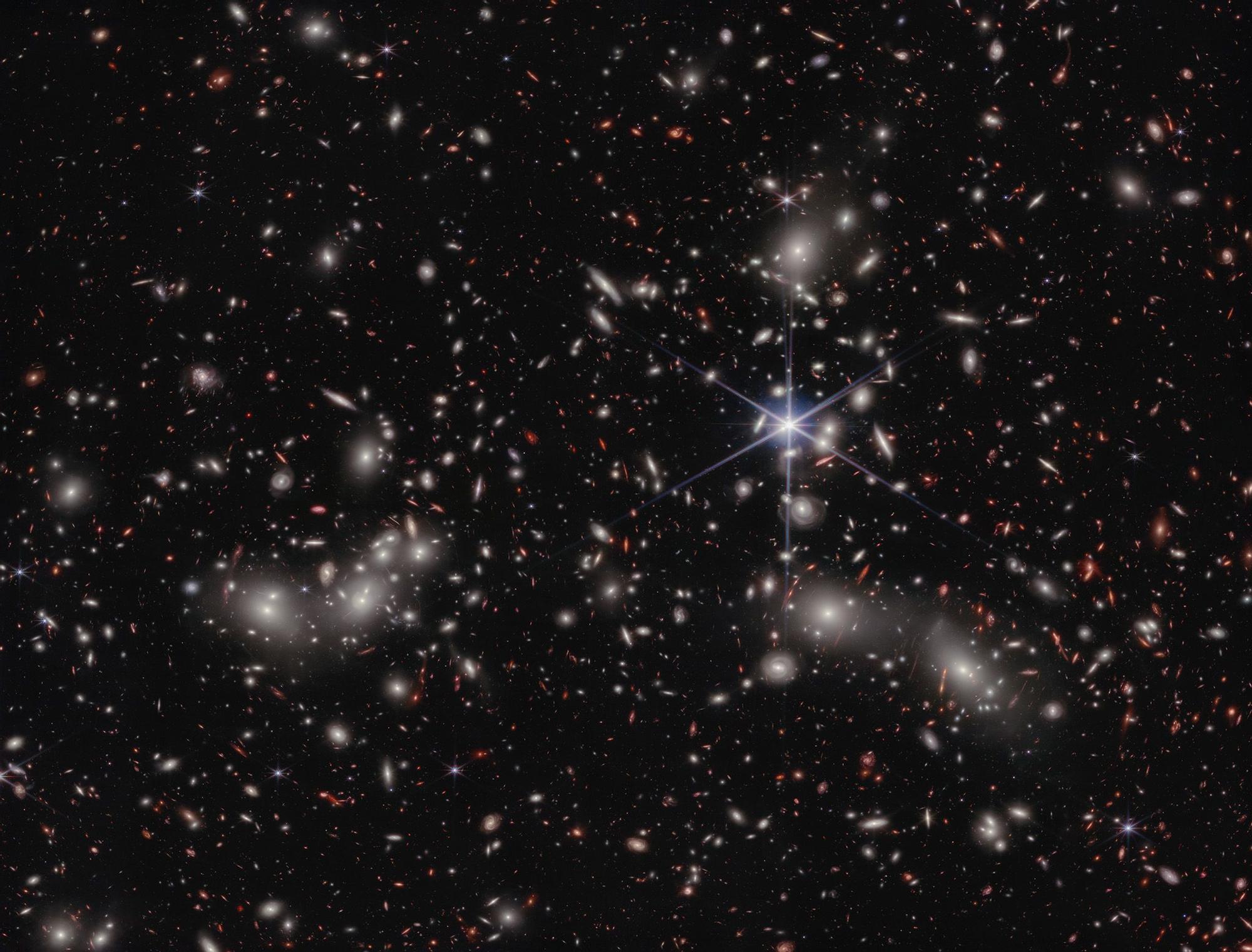The mass creates a powerful gravitational lens that allows much more distant galaxies to be observed in the early universe using the cluster as a magnifying glass.
the space telescope james webb has revealed never-before-seen details of a region of space known as Pandora Cluster; the picture shows three galaxy clustersalready massive, which come together to form a megacluster.
The combined mass of the galaxy clusters creates a powerful gravitational lens, a effect of natural increase in gravitywhich makes it possible to observe much more distant galaxies in the early universe using the cluster as a magnifying glass.
The new view of the Pandora Cluster unites four Webb instants into a panoramic image, showing approximately 50,000 near-infrared light sources, the US space agency NASA and the European Space Agency (ESA) report.
Only the central core of the Pandora cluster (Abell 2744) has previously been studied in detail by @NASAHubble. The powerful vision of @NASAWebb it is allowing astronomers to get a much broader and deeper perspective of this region. pic.twitter.com/FlafvPb3Is
— NASA in Spanish (@NASA_es) February 15, 2023
In addition to magnification, gravitational lensing distorts the appearance of distant galaxies, making them look very different from those in the foreground.
Astronomers studied the region under the Uncover program.
«he ancient myth of pandora is about human curiosity and discoveries that delineate the past from the future, which I think is a fitting connection to the new realms of the universe that Webb is opening up, including this deep-field image of the Pandora cluster,» says astronomer Rachel Bezanson of the University of from Pittsburgh in Pennsylvania.
«When the images of the Pandora Cluster first came in from Webb, honestly we were shockedadds Bezanson: “There was so much detail in the foreground cluster and so many distant lensing galaxies that I got lost in the image; Webb exceeded our expectations.»
The Uncover team pulled out the Webb’s near-infrared camera (NIRCam) to capture the cluster with exposures lasting from 4 to 6 hours, for a total of approximately 30 hours of observing time.
The next step is meticulously reviewing the imaging data and select galaxies for follow-up observation with the Near Infrared Spectrograph (NIRSpec).
Related news
This instrument has improved the precise distance, along with other detailed information about the compositionsyou will need new insights into the early era of galaxy creation and evolution.
The Uncover team hopes to make these observations with NIRSpec this summer.

